Timo Lüddecke
Minimizing Structural Vibrations via Guided Flow Matching Design Optimization
Jun 18, 2025Abstract:Structural vibrations are a source of unwanted noise in engineering systems like cars, trains or airplanes. Minimizing these vibrations is crucial for improving passenger comfort. This work presents a novel design optimization approach based on guided flow matching for reducing vibrations by placing beadings (indentations) in plate-like structures. Our method integrates a generative flow matching model and a surrogate model trained to predict structural vibrations. During the generation process, the flow matching model pushes towards manufacturability while the surrogate model pushes to low-vibration solutions. The flow matching model and its training data implicitly define the design space, enabling a broader exploration of potential solutions as no optimization of manually-defined design parameters is required. We apply our method to a range of differentiable optimization objectives, including direct optimization of specific eigenfrequencies through careful construction of the objective function. Results demonstrate that our method generates diverse and manufacturable plate designs with reduced structural vibrations compared to designs from random search, a criterion-based design heuristic and genetic optimization. The code and data are available from https://github.com/ecker-lab/Optimizing_Vibrating_Plates.
The impact of AI on engineering design procedures for dynamical systems
Dec 16, 2024Abstract:Artificial intelligence (AI) is driving transformative changes across numerous fields, revolutionizing conventional processes and creating new opportunities for innovation. The development of mechatronic systems is undergoing a similar transformation. Over the past decade, modeling, simulation, and optimization techniques have become integral to the design process, paving the way for the adoption of AI-based methods. In this paper, we examine the potential for integrating AI into the engineering design process, using the V-model from the VDI guideline 2206, considered the state-of-the-art in product design, as a foundation. We identify and classify AI methods based on their suitability for specific stages within the engineering product design workflow. Furthermore, we present a series of application examples where AI-assisted design has been successfully implemented by the authors. These examples, drawn from research projects within the DFG Priority Program \emph{SPP~2353: Daring More Intelligence - Design Assistants in Mechanics and Dynamics}, showcase a diverse range of applications across mechanics and mechatronics, including areas such as acoustics and robotics.
Computer Vision for Primate Behavior Analysis in the Wild
Jan 29, 2024Abstract:Advances in computer vision as well as increasingly widespread video-based behavioral monitoring have great potential for transforming how we study animal cognition and behavior. However, there is still a fairly large gap between the exciting prospects and what can actually be achieved in practice today, especially in videos from the wild. With this perspective paper, we want to contribute towards closing this gap, by guiding behavioral scientists in what can be expected from current methods and steering computer vision researchers towards problems that are relevant to advance research in animal behavior. We start with a survey of the state-of-the-art methods for computer vision problems that are directly relevant to the video-based study of animal behavior, including object detection, multi-individual tracking, (inter)action recognition and individual identification. We then review methods for effort-efficient learning, which is one of the biggest challenges from a practical perspective. Finally, we close with an outlook into the future of the emerging field of computer vision for animal behavior, where we argue that the field should move fast beyond the common frame-by-frame processing and treat video as a first-class citizen.
Charting New Territories: Exploring the Geographic and Geospatial Capabilities of Multimodal LLMs
Nov 30, 2023
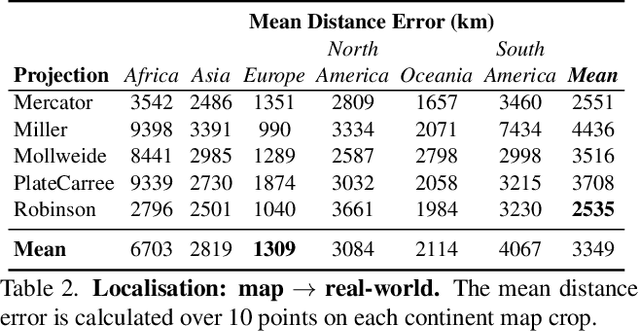
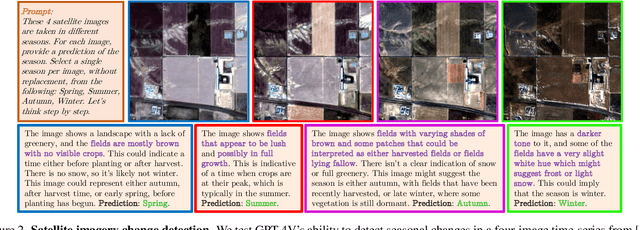

Abstract:Multimodal large language models (MLLMs) have shown remarkable capabilities across a broad range of tasks but their knowledge and abilities in the geographic and geospatial domains are yet to be explored, despite potential wide-ranging benefits to navigation, environmental research, urban development, and disaster response. We conduct a series of experiments exploring various vision capabilities of MLLMs within these domains, particularly focusing on the frontier model GPT-4V, and benchmark its performance against open-source counterparts. Our methodology involves challenging these models with a small-scale geographic benchmark consisting of a suite of visual tasks, testing their abilities across a spectrum of complexity. The analysis uncovers not only where such models excel, including instances where they outperform humans, but also where they falter, providing a balanced view of their capabilities in the geographic domain. To enable the comparison and evaluation of future models, our benchmark will be publicly released.
Vibroacoustic Frequency Response Prediction with Query-based Operator Networks
Oct 11, 2023



Abstract:Understanding vibroacoustic wave propagation in mechanical structures like airplanes, cars and houses is crucial to ensure health and comfort of their users. To analyze such systems, designers and engineers primarily consider the dynamic response in the frequency domain, which is computed through expensive numerical simulations like the finite element method. In contrast, data-driven surrogate models offer the promise of speeding up these simulations, thereby facilitating tasks like design optimization, uncertainty quantification, and design space exploration. We present a structured benchmark for a representative vibroacoustic problem: Predicting the frequency response for vibrating plates with varying forms of beadings. The benchmark features a total of 12,000 plate geometries with an associated numerical solution and introduces evaluation metrics to quantify the prediction quality. To address the frequency response prediction task, we propose a novel frequency query operator model, which is trained to map plate geometries to frequency response functions. By integrating principles from operator learning and implicit models for shape encoding, our approach effectively addresses the prediction of resonance peaks of frequency responses. We evaluate the method on our vibrating-plates benchmark and find that it outperforms DeepONets, Fourier Neural Operators and more traditional neural network architectures. The code and dataset are available from https://eckerlab.org/code/delden2023_plate.
GPT4GEO: How a Language Model Sees the World's Geography
May 30, 2023

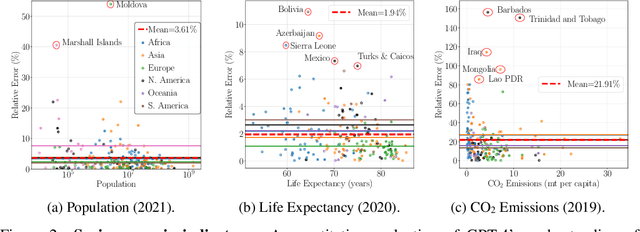
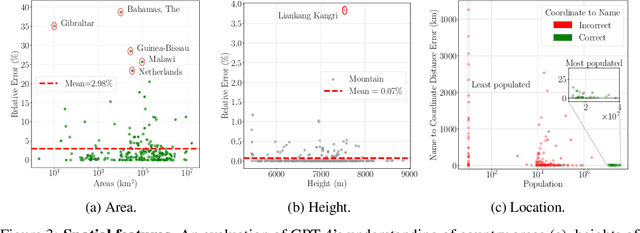
Abstract:Large language models (LLMs) have shown remarkable capabilities across a broad range of tasks involving question answering and the generation of coherent text and code. Comprehensively understanding the strengths and weaknesses of LLMs is beneficial for safety, downstream applications and improving performance. In this work, we investigate the degree to which GPT-4 has acquired factual geographic knowledge and is capable of using this knowledge for interpretative reasoning, which is especially important for applications that involve geographic data, such as geospatial analysis, supply chain management, and disaster response. To this end, we design and conduct a series of diverse experiments, starting from factual tasks such as location, distance and elevation estimation to more complex questions such as generating country outlines and travel networks, route finding under constraints and supply chain analysis. We provide a broad characterisation of what GPT-4 (without plugins or Internet access) knows about the world, highlighting both potentially surprising capabilities but also limitations.
Self-supervised Representation Learning of Neuronal Morphologies
Jan 18, 2022
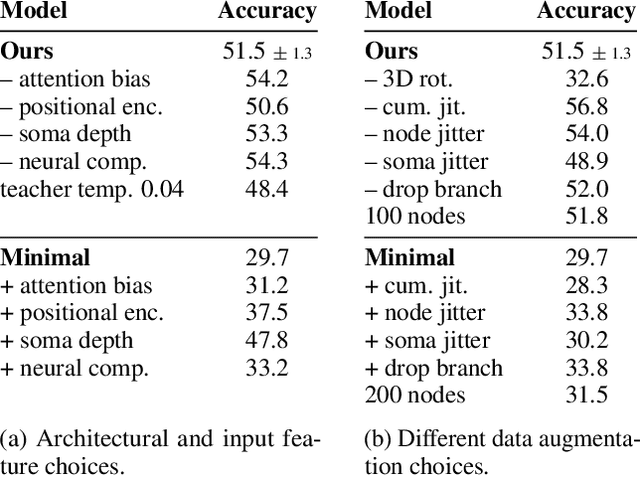
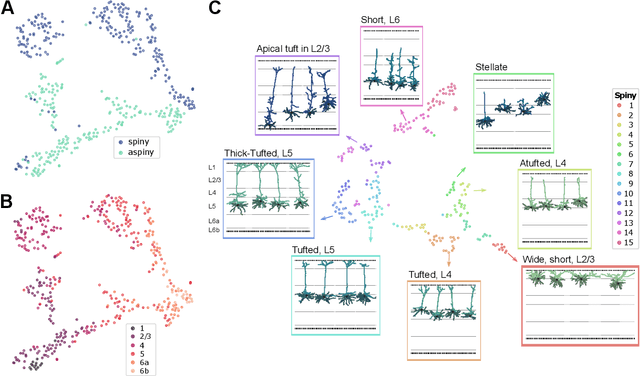
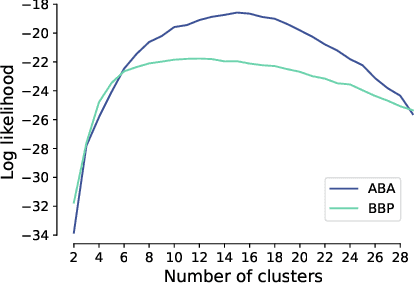
Abstract:Understanding the diversity of cell types and their function in the brain is one of the key challenges in neuroscience. The advent of large-scale datasets has given rise to the need of unbiased and quantitative approaches to cell type classification. We present GraphDINO, a purely data-driven approach to learning a low dimensional representation of the 3D morphology of neurons. GraphDINO is a novel graph representation learning method for spatial graphs utilizing self-supervised learning on transformer models. It combines attention-based global interaction between nodes and classic graph convolutional processing. We show, in two different species and cortical areas, that this method is able to yield morphological cell type clustering that is comparable to manual feature-based classification and shows a good correspondence to expert-labeled cell types. Our method is applicable beyond neuroscience in settings where samples in a dataset are graphs and graph-level embeddings are desired.
Prompt-Based Multi-Modal Image Segmentation
Dec 18, 2021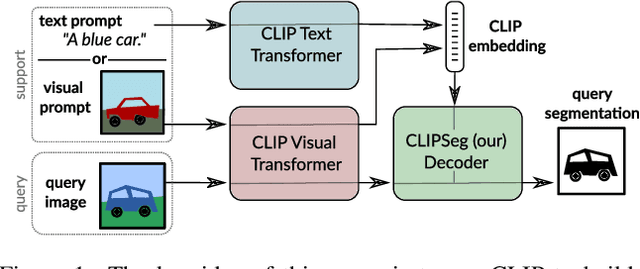

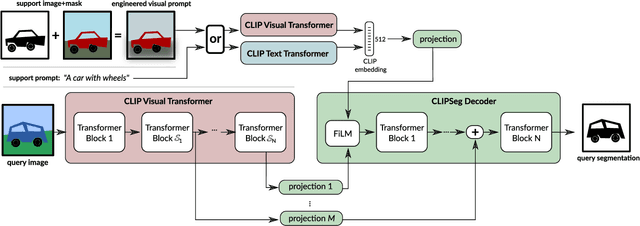

Abstract:Image segmentation is usually addressed by training a model for a fixed set of object classes. Incorporating additional classes or more complex queries later is expensive as it requires re-training the model on a dataset that encompasses these expressions. Here we propose a system that can generate image segmentations based on arbitrary prompts at test time. A prompt can be either a text or an image. This approach enables us to create a unified model (trained once) for three common segmentation tasks, which come with distinct challenges: referring expression segmentation, zero-shot segmentation and one-shot segmentation. We build upon the CLIP model as a backbone which we extend with a transformer-based decoder that enables dense prediction. After training on an extended version of the PhraseCut dataset, our system generates a binary segmentation map for an image based on a free-text prompt or on an additional image expressing the query. Different variants of the latter image-based prompts are analyzed in detail. This novel hybrid input allows for dynamic adaptation not only to the three segmentation tasks mentioned above, but to any binary segmentation task where a text or image query can be formulated. Finally, we find our system to adapt well to generalized queries involving affordances or properties. Source code: https://eckerlab.org/code/clipseg
One-shot path planning for multi-agent systems using fully convolutional neural network
Apr 01, 2020
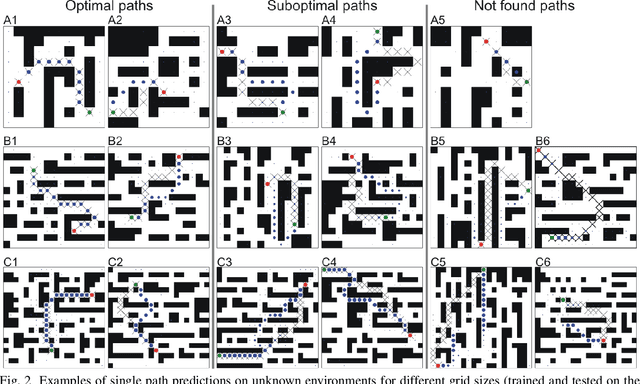
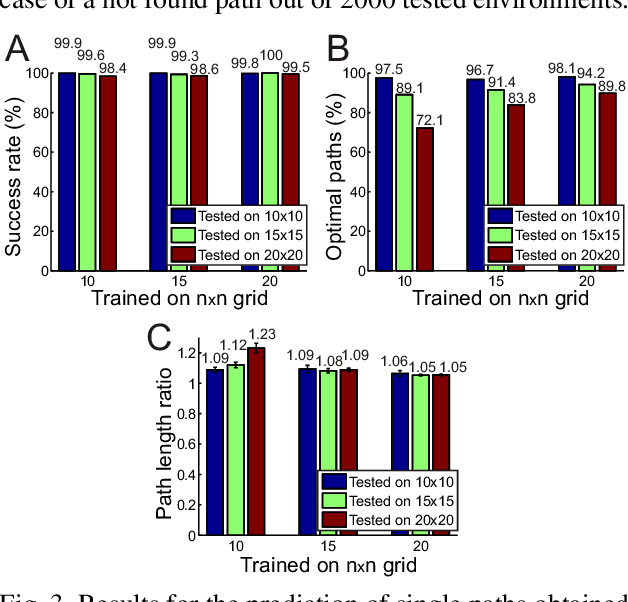
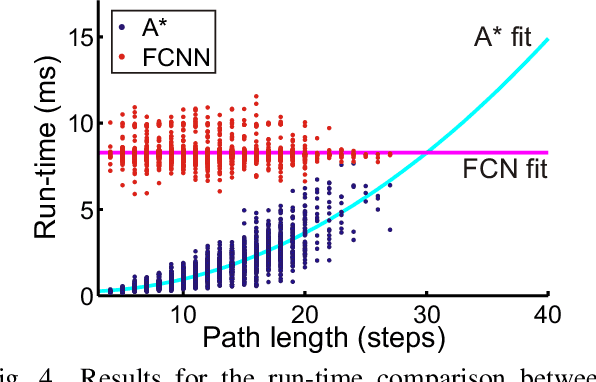
Abstract:Path planning plays a crucial role in robot action execution, since a path or a motion trajectory for a particular action has to be defined first before the action can be executed. Most of the current approaches are iterative methods where the trajectory is generated iteratively by predicting the next state based on the current state. Moreover, in case of multi-agent systems, paths are planned for each agent separately. In contrast to that, we propose a novel method by utilising fully convolutional neural network, which allows generation of complete paths, even for more than one agent, in one-shot, i.e., with a single prediction step. We demonstrate that our method is able to successfully generate optimal or close to optimal paths in more than 98\% of the cases for single path predictions. Moreover, we show that although the network has never been trained on multi-path planning it is also able to generate optimal or close to optimal paths in 85.7\% and 65.4\% of the cases when generating two and three paths, respectively.
Attention on Abstract Visual Reasoning
Nov 14, 2019



Abstract:Attention mechanisms have been boosting the performance of deep learning models on a wide range of applications, ranging from speech understanding to program induction. However, despite experiments from psychology which suggest that attention plays an essential role in visual reasoning, the full potential of attention mechanisms has so far not been explored to solve abstract cognitive tasks on image data. In this work, we propose a hybrid network architecture, grounded on self-attention and relational reasoning. We call this new model Attention Relation Network (ARNe). ARNe combines features from the recently introduced Transformer and the Wild Relation Network (WReN). We test ARNe on the Procedurally Generated Matrices (PGMs) datasets for abstract visual reasoning. ARNe excels the WReN model on this task by 11.28 ppt. Relational concepts between objects are efficiently learned demanding only 35% of the training samples to surpass reported accuracy of the base line model. Our proposed hybrid model, represents an alternative on learning abstract relations using self-attention and demonstrates that the Transformer network is also well suited for abstract visual reasoning.
 Add to Chrome
Add to Chrome Add to Firefox
Add to Firefox Add to Edge
Add to Edge